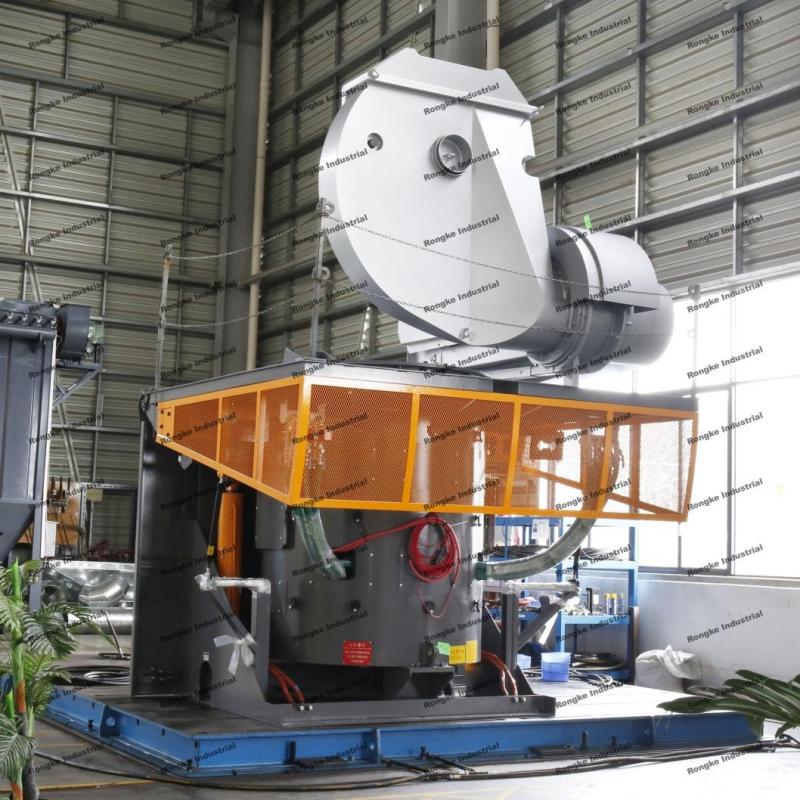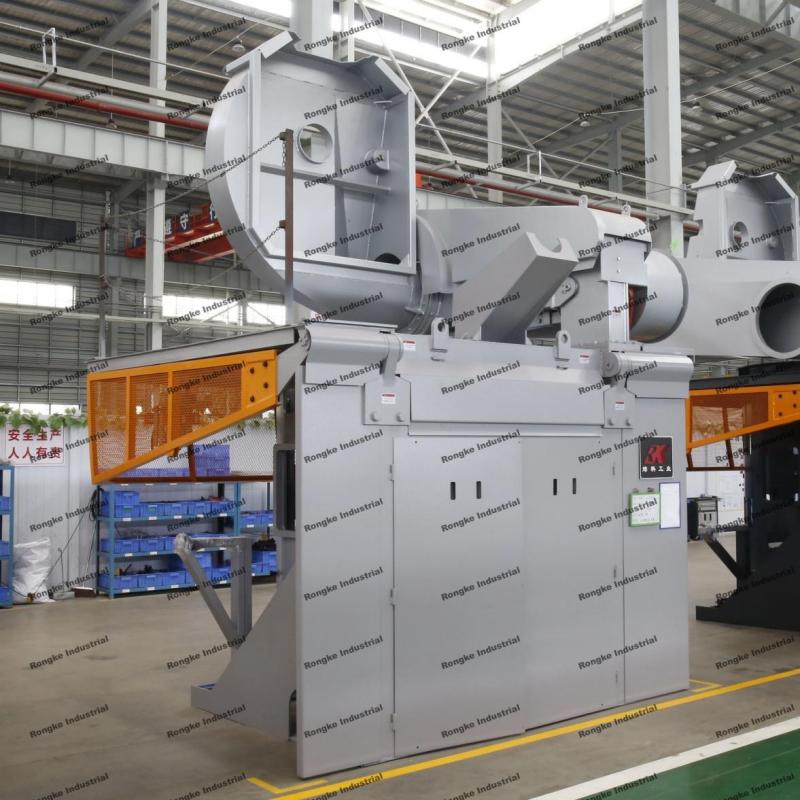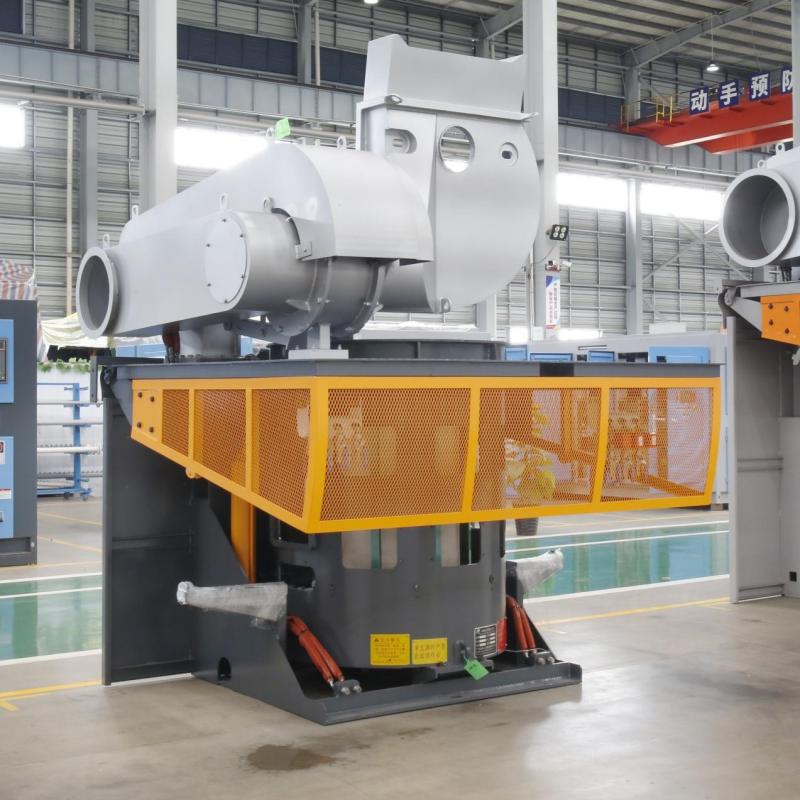
Advanced Industrial Foundry: Intermediate Frequency Coreless Induction Furnace
Have you explored the Intermediate Frequency Coreless Induction Furnace (IFCIF)? This state-of-the-art furnace technology stands at the forefront of innovation in industrial foundries. The IFCIF boasts a refined design with interactive windows, exceptional quality details, and advanced technology, setting a new standard in materials and processing techniques. Why does this matter? The IFCIF enhances safety, stability, and energy efficiency in production processes. In modern industrial foundries, it translates to higher-quality output, lower energy consumption, and improved overall efficiency. Remarkably, these furnaces can cut energy usage by up to 30% compared to traditional methods, making the IFCIF a crucial asset in contemporary manufacturing.

Rongke’s IFCIF Technical Specifications
Design Characteristics of IFCIF
Rongke’s Intermediate Frequency Coreless Induction Furnace (IFCIF) is equipped with the innovative Rongke IDE full-time and all-round furnace leakage alarm system. This system operates on a sophisticated leakage detection principle, where molten iron seeping through gaps in the furnace lining triggers a leakage current alarm upon contact with the current detection electrode. If the iron penetrates further to the coil, a voltage detection circuit activates alarms and pinpoints the specific location of the leakage. Additionally, the grounding alarm detection principle ensures safety by triggering alarms when molten iron is 2cm away from the coil, with leakage currents exceeding set values or coolant conductivity surpassing thresholds. This intelligent system significantly enhances safety by providing early warnings of potential failures.
Rongke’s IFCIF also stands out for its leading energy-saving capabilities. The furnace’s coil, its heart, is crafted from TU1 grade oxygen-free copper from Chinalco Luoyang Copper Co., Ltd. Using the industry’s thickest wall copper tube, manufactured through a cold extrusion process, combined with double coil technology, results in highly energy-efficient products. This pioneering approach reduces energy consumption and operational costs.
Core Components
- Power Supply: The power supply unit of Rongke’s IFCIF is designed to provide stable and efficient energy, ensuring consistent furnace operation. It is built to handle high power levels, crucial for melting and alloying various metals with precision.
- Induction Coil: The induction coil, made from high-quality TU1 grade oxygen-free copper, is the furnace’s most critical component. Its design, incorporating double coil technology, enhances energy efficiency and ensures uniform heating, which is essential for high-quality metal production.
- Crucible: The crucible in the IFCIF is engineered to withstand extreme temperatures and corrosive environments. It is crucial for containing the molten metal and ensuring the melting process is efficient and safe.
Frequency and Power Ranges
Rongke’s IFCIFs are versatile, operating over a wide range of frequencies and power levels to accommodate various industrial needs. The intermediate frequency range enhances the melting process, allowing for precise control over temperature and energy efficiency. This flexibility makes IFCIFs suitable for diverse applications, from small-scale operations to large industrial foundries.
Operating Principles
Basic Principles of Electromagnetic Induction
The IFCIF operates on the principle of electromagnetic induction, where alternating current (AC) passes through the induction coil, generating a magnetic field. This magnetic field induces eddy currents in the metal placed within the crucible, causing it to heat up and eventually melt. The process is highly efficient, as the energy is directly transferred to the metal.
How Intermediate Frequencies Enhance Metal Melting
Intermediate frequencies are particularly effective in enhancing metal melting. They provide a balance between the depth of penetration of the magnetic field and the heating rate. This ensures that the metal heats uniformly, reducing the risk of hot spots or uneven melting, which is crucial for maintaining the quality of the final product.
Temperature Control and Energy Efficiency
Rongke’s IFCIFs are equipped with advanced temperature control systems that ensure precise monitoring and regulation of the melting process. This control enhances energy efficiency, as the furnace operates within optimal temperature ranges, reducing unnecessary energy consumption and ensuring consistent production quality.

Advantages of Using IFCIF
- Noise Reduction: Rongke’s IFCIFs produce 30% less noise compared to similar products, creating a quieter and more comfortable working environment.
- Enhanced Safety: The fully enclosed furnace shell prevents coil ignition caused by dust pollution, significantly improving operational safety.
- Reduced Magnetic Radiation: The closed furnace shell provides secondary shielding for the coil’s magnetic field, reducing magnetic radiation to just 10% of similar products. This is far below national standards, ensuring a safer environment for workers.
Applications in Industry
Types of Metals Typically Melted
Rongke’s IFCIFs are capable of melting a wide variety of metals, including iron, steel, aluminum, copper, and precious metals. This versatility makes them suitable for diverse industrial applications.
Sectors Relying on IFCIF
Industries such as automotive, aerospace, and tool making heavily rely on IFCIFs. These sectors require precise and efficient metal melting processes to produce high-quality components, making Rongke’s IFCIFs an essential part of their manufacturing processes.
Case Studies of Industrial Applications
Since 2002, a prominent client company has utilized Rongke’s IFCIF technology, developing an industrial park spanning approximately 1,300 acres. Engaged in construction, environmental protection equipment production, and steel products, this large group company has received numerous accolades, including executive director unit of the China Rubber Industry Association and member unit of the China Building Waterproofing Association. In 2019, the company ordered a 10-ton series one-to-two electric furnace melting system from Rongke for steel production. Throughout the service period, Rongke provided comprehensive services, from design to follow-up visits, delivering an optimal engineering plan that earned high praise from the client.
Operational Challenges
Common Issues Faced During Operation
Operators of IFCIFs may encounter issues such as coil failures, refractory wear, and power supply disruptions. These challenges can lead to operational downtime and reduced efficiency if not promptly addressed.
Maintenance Strategies to Mitigate Downtime
To mitigate downtime, regular maintenance strategies should be implemented, including routine inspections, timely replacement of worn components, and ensuring proper cooling system operation. Preventative maintenance helps maintain furnace efficiency and longevity.
Longevity and Durability Concerns
Ensuring the longevity and durability of IFCIFs involves using high-quality materials and adhering to strict manufacturing standards. Regular maintenance and timely upgrades can extend the operational life of the furnace, ensuring consistent performance over time.
Future Trends and Innovations
Technological Advancements in Induction Furnace Technology
Future trends in induction furnace technology include the development of more energy-efficient systems, advanced materials for coil and crucible construction, and improved control systems for better precision and efficiency.
Integration with Automation and IoT
The integration of automation and Internet of Things (IoT) technologies is set to revolutionize IFCIF operations. Automated systems can optimize the melting process, reduce human error, and enhance overall efficiency. IoT connectivity allows for real-time monitoring and predictive maintenance, further improving operational reliability.
Environmental Considerations and Energy Regulations
As environmental regulations become more stringent, IFCIF technology must adapt to reduce emissions and energy consumption. Innovations aimed at improving energy efficiency and reducing the environmental impact of metal melting processes will be crucial for the future of the industry.
Final Words
Rongke’s Intermediate Frequency Coreless Induction Furnaces represent the pinnacle of modern metal melting technology. With advanced design characteristics, high-quality core components, and a commitment to energy efficiency and safety, these furnaces are indispensable in today’s industrial foundries. The ongoing advancements in technology and integration with automation promise an even more efficient and environmentally friendly future for IFCIFs.




